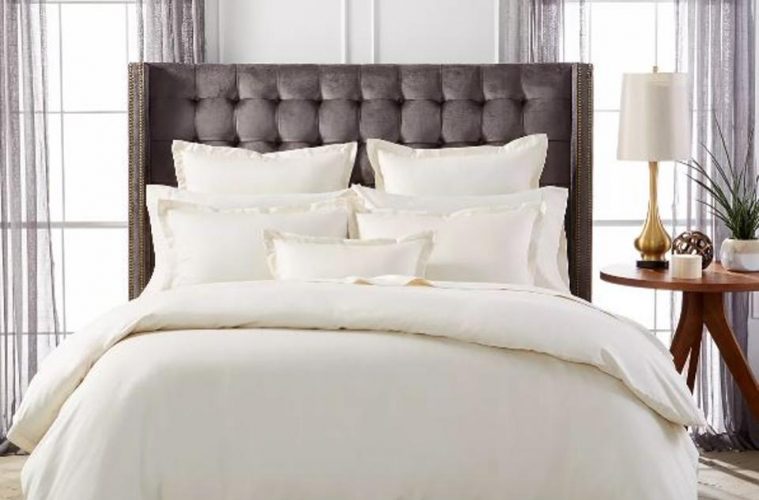A good night’s sleep goes beyond a comfortable bed and a good mattress. To achieve that good feeling of warmth and comfort through the night, it is important to have the right bedding. Many have emphasized choosing sheets based on the thread count, cooling properties, elasticity, and many other variables while overlooking the weaving material. This contributes a lot to comfort. The material used will most certainly dictate whether or not you have the best bed sheets or comforters.
Bed Sheets
Cotton sheets offer the most exclusive feeling of luxury, style, and comfort in bed, while still providing strength and durability of the fabric. Despite having different variations in quality based on the staple length used in weaving, cotton remains to be the most preferred material for those who look for style, comfort, and, to some extent, that feeling of exclusivity depending on the type of cotton used.
Flannel is a variant of cotton, but most people prefer it as stand-alone material. If you are looking for a product that has better heat retention properties than cotton, flannel sheets are to die for. These are most suited for winter nights as it weaves to trap body heat, keeping you warm and comfortable. During the summer, however, these sheets feel relatively uncomfortable and heavy.
Silk sheets equally give the user a sensual and luxurious feeling. They are visually appealing, providing a lavish feeling to the room. They also have proven to have hypoallergenic properties that enable those having raw allergies to sleep comfortably through the night. However, they come with a relatively high price and are equally very delicate, requiring a lot of attention in maintenance and care.
Tencel sheets have good heat retention properties but not as breathable as cotton.
They are good for the cold winter nights. The raw material for these is derived from the pulp of eucalyptus trees, meaning they require fewer chemicals and energy to produce, while still providing a soft and comfortable product. They offer a great alternative to persons who are environmentally cautious.
Bamboo sheets have equally been deemed eco-friendly. Much as the raw product is derived from the plant, a small number of chemicals are used in its processing of the fibers. These sheets are not entirely chemical-free. However, if eco-friendliness is not top of your priorities, bamboo sheets offer a smooth, warm, breathable, and comfortable feeling without the expense of having cotton or silk.
If you are looking for less comfort but more resilience, polyester sheets are the way to go. Polyester I is a man-made fabric derived from polymers. Polyester sheets are very durable and stain and wrinkle resistant. They are equally inexpensive due to the raw materials used. This can provide a good bedding solution for children. However, they provide less comfort as they are less breathable, have low heat retention, and low fluid absorption.
Linen was the preferred bedding material in the past because of its soft texture that offered breathable and comfortable sheets. The fabric also seemed to be stronger as it ages. Its strong properties make it a good alternative for children’s bedding. It, however, feels stiff and easily wrinkles.
Lastly, we can also have blends of any two of the materials already mentioned. The blends offer near similar comfort and durability while reducing the cost of acquisition. This provides the user with a feeling of warmth and comfort while still looking out for durability and strength in the fabric and affordability of the sheets.
Bed Spreads, Duvets, and Comforters
Bedspreads, such as duvets, blankets, and comforters are specifically designed to provide the user with warmth and heat retention properties during the cold seasons. In consideration, one should look at materials that provide them with the best heat retention properties that suit their needs, based on their local weather patterns. In duvets, fillings are divided into two main categories, natural and synthetic. You might want a big thick fluffy blanket.
Natural filling duvets are made from naturally existing products that allow for a more breathable experience while still providing for warmth and heat retention. Fillings include fluffy feathers of birds or wool. Synthetic fillings provide an alternative for those who may be allergic to feathers. They are made of either hollow fibers that trap air which creates warmth, or very fine microfibres. Synthetic fillings tend to be relatively lighter than natural filling bedspreads.
As you can see, there are a lot of choices for you. Pick the one that will solve your sleeping need and get the good night’s sleep you deserve.

